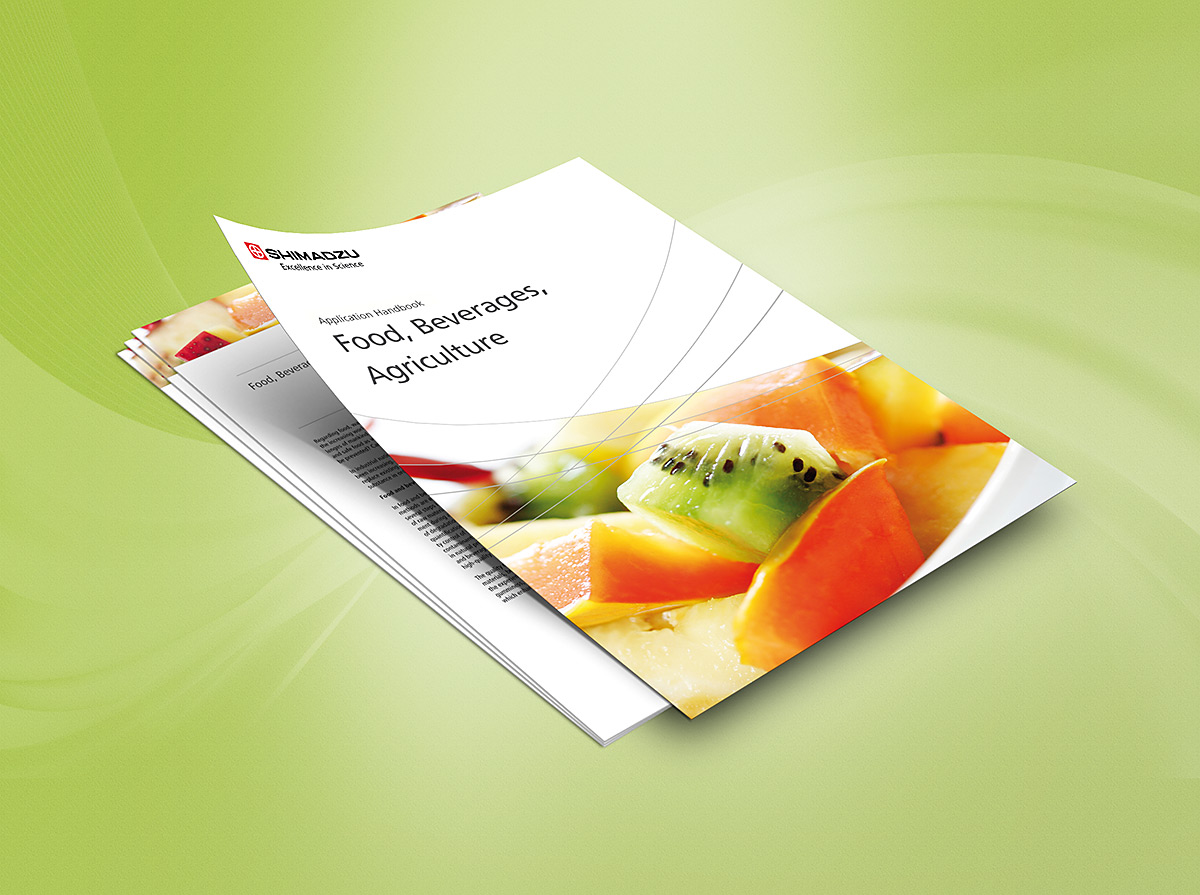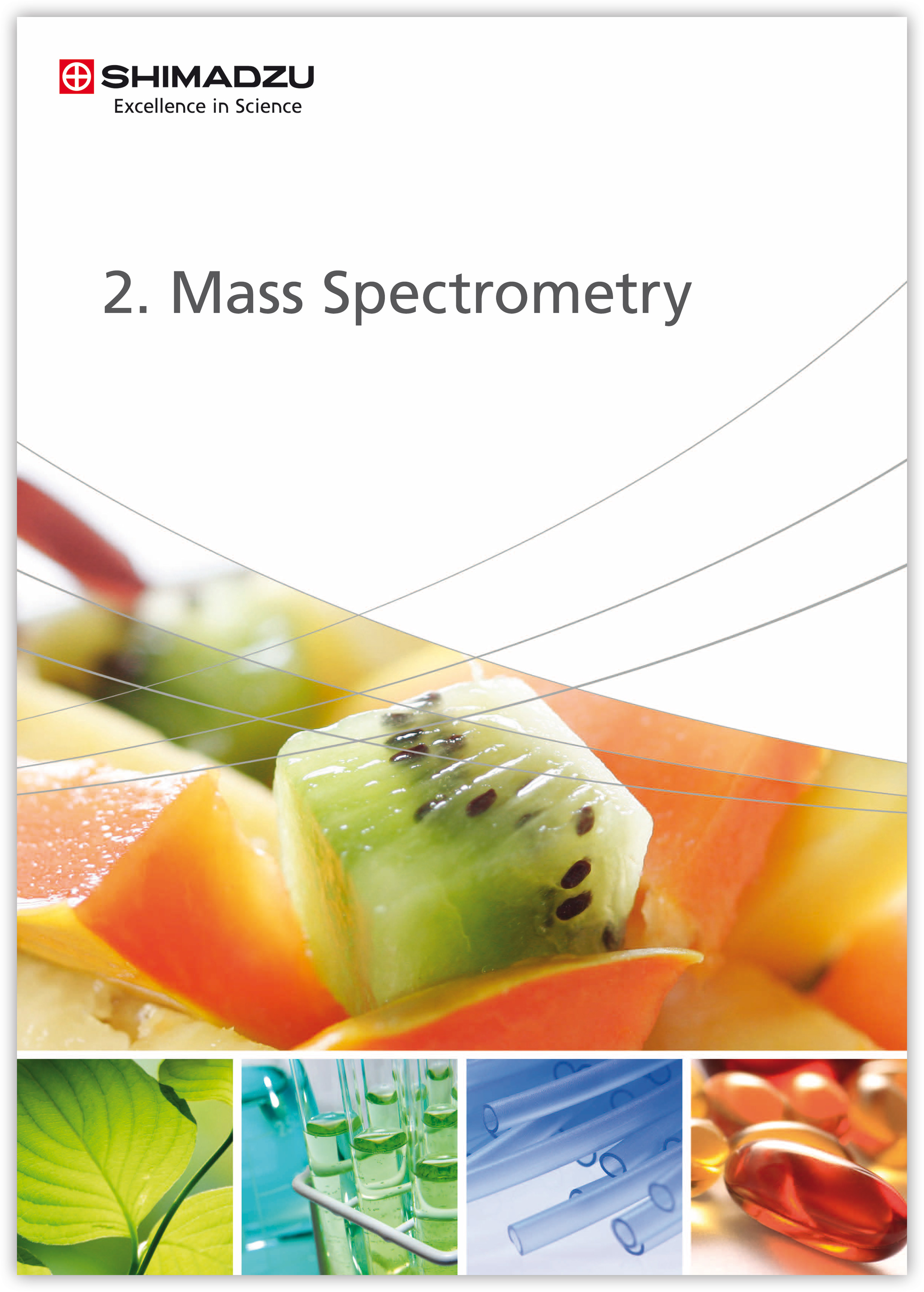58 real life applications on food quality and food safety
Application Handbook: Food, Beverages, Agriculture

Over 200 pages, the new Application Handbook “Food, Beverages, Agriculture” covers 58 real life applications related to hot subjects such as food scandals which recently have alarmed consumers all around the world. The edition contains most advanced technologies and solutions such as chromatography, mass spectrometry, spectroscopy, life science, sum parameter (TOC/TN) and materials testing and inspection.
The book is free of charge and can be downloaded at: http:// bit.ly/FoodBeveragesAgriculture
Regarding food, water, beverages and agricultural cropland, the increasing world population is one of the biggest challenges of mankind.
How can access be provided to sufficient and safe food as well as clean water? How can crop failure be prevented? Can new food sources be explored?
Analytical tools for food and beverages industries
Determination of pesticides in vegetables, identification of horse meat in lasagne and quantification of heavy metals in drinking water: in food and beverages industries, analytical instrumentation methods are essential to ensure high product quality during many steps in the production process such as quality control of raw materials (e.g. natural products) and their treatment during and after production. The food and beverages spectrum is so widespread that dedicated analytical technologies must be applied to meet the challenges regarding consumer and product safety.

This is a quick overview of the technologies and their use:
Chromatography
- Chromatographic separation and analysis of volatile and semi volatile components in food, beverages, liquors and packaging materials are widely used in food quality control. GC is a key technique in qualitative and/or quantitative analysis of food composition, natural products, food additives, flavor and aroma compounds and contaminants such as pesticides and environmental pollutants.
- HPLC and UHPLC systems are able to quantitatively analyze substances in mixtures containing multiple ingredients by separating and detecting target substances. They are also used to purify specific substances once they are separated.
- GC-MS is a hyphenated technique combining the separating power of gas chromatography (GC) with the detection power of mass spectrometry to identify different substances within a sample, for example the fast screening of residual pesticides in food using fast GC-MS/MS.
- LC-MS is a powerful technique that brings together very high sensitivity and high selectivity. Its application is oriented towards the separation, general detection and potential identification of chemicals of particular masses in the presence of other chemicals (e.g. complex mixtures). It is widespread in food safety applications such as Multi-residue analysis of pesticides in food samples by Triple Quadrupole UHPLC-MS/MS.
Spectroscopy
- Atomic absorption spectroscopy (AAS) or inductively coupled plasma optical emission spectroscopy (ICP-OES) is the method for quantitative analysis of element concentrations in food samples and beverages. AAS allows the sequential analysis of elements, and ICP-OES is used for the simultaneous analysis of major, minor and trace elements in drinking water, mineral water, wine and other beverages.
- Energy dispersive fluorescence spectrometry allows the quantitative analysis of element distribution in food samples. This technique provides non-destructive and fast measurements of liquids and solids and is best suited for analysis of the elemental range from sodium/carbon to uranium, covering the majority of the metallic elements.
- Molecular spectroscopy is used for analysis of metals, ions, colors and molecules in the ultraviolet and visible range of the light spectrum. Determination of wine color and quality control of the wine bottles are typical applications in food and food packaging industries using UV-VIS-NIR spectrophotometers.
- Fourier transform infrared (FTIR) spectroscopy is used for quantification and identification of substances from the near to the far infrared range. Tea bags made of PET are identified using single reflection ATR in combination with infrared spectrometry.
Sum parameter
- The TOC sum parameter determines organic compounds in different matrices, especially in all kinds of water. In the food and beverage industry, water is used as solvent, product or rinsing solution.
Material testing and inspection
- Besides food flavor, texture such as crispiness, glutinousness, feel on tooth and tongue influence the perception of food.
Shimadzu provides complete solutions including soft- and hardware to evaluate physical properties of food.